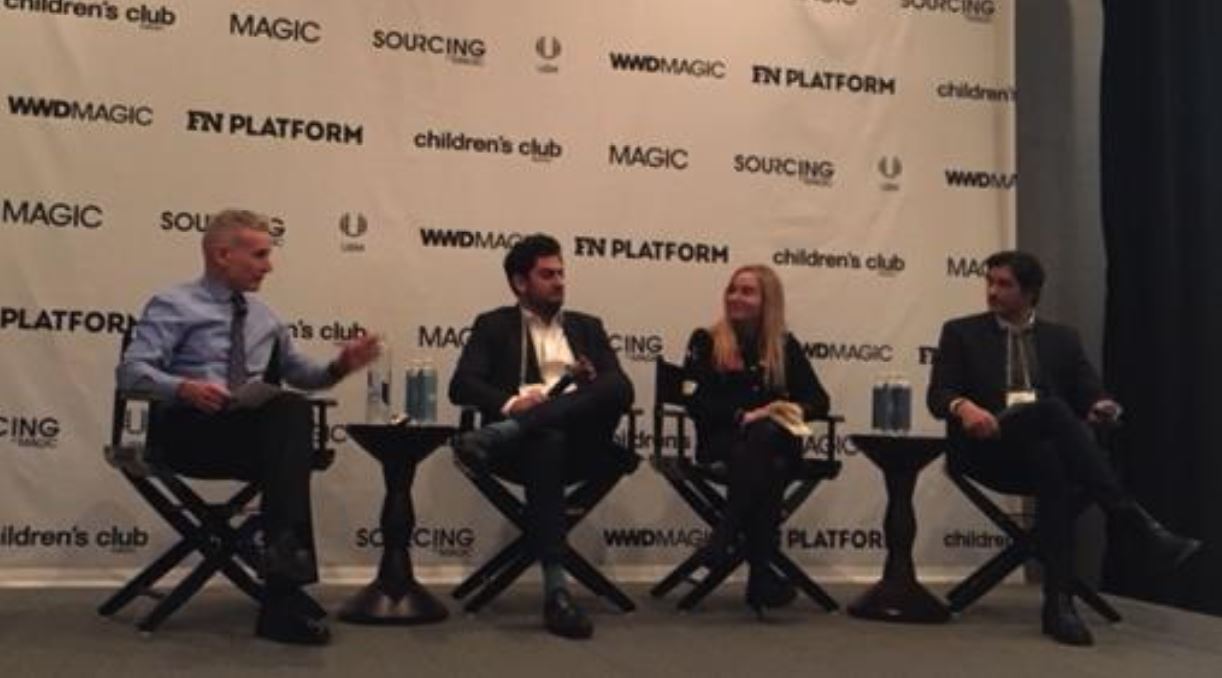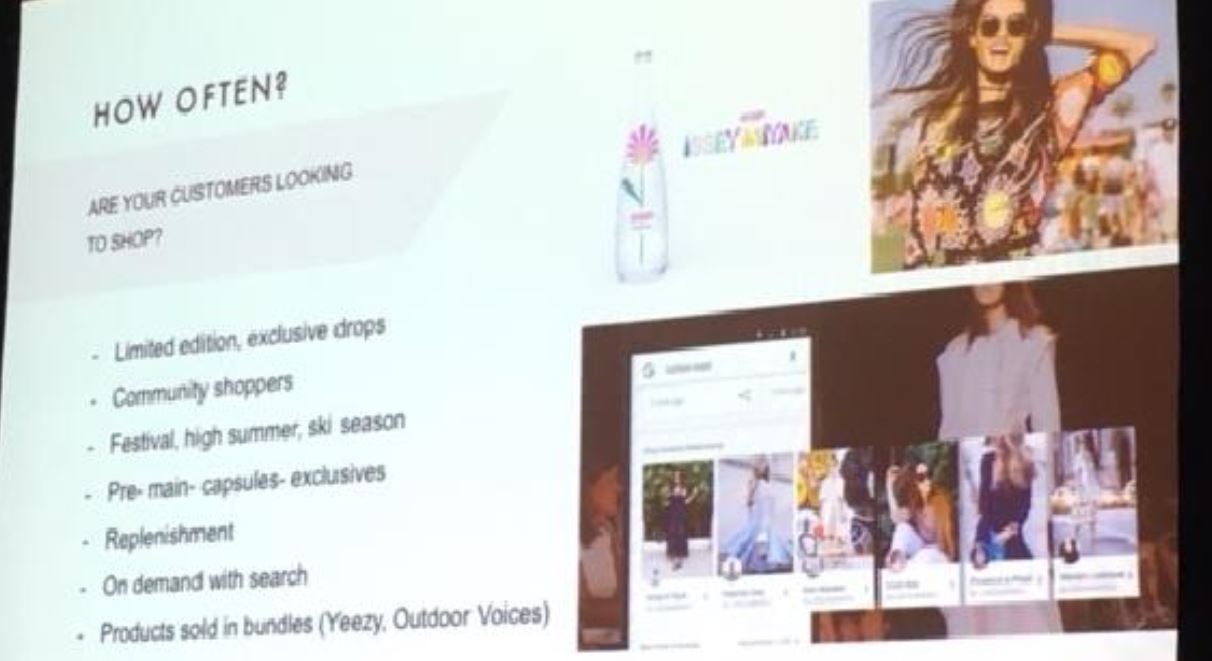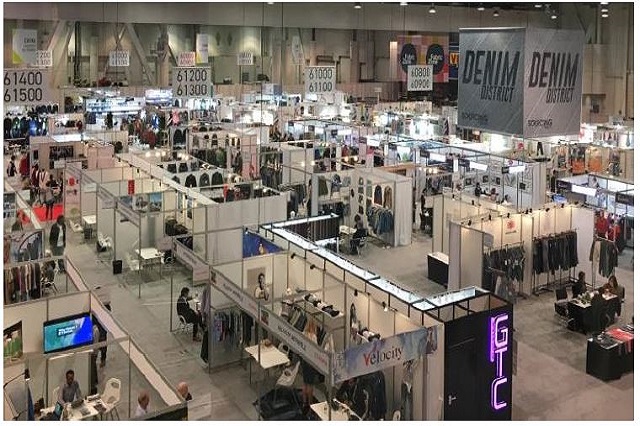1) “Reimagining Retail” Is Giving Consumers What They Want, When They Want It, 52 Seasons a Year
In a panel session titled “Disrupting Fashion, a Changing Landscape,” Robert D’Loren, Founder, Chairman and CEO, Xcel Brands, led a discussion on the forces driving the need for change. D’Loren suggested that although Amazon and e-commerce are blamed for a lot of the industry’s problems, e-commerce is only 20% of the challenge. Speed is the new currency where fast fashion has reimagined the seasons and consumers decide current trends with see-now, buy now. The problem is that the current fashion industry is not equipped to provide consumers with what they want, when they want it.
D’Loren believes that the only way retailers can win is by bringing something new to the stores every week and removing the friction points.
He questioned why retailers have cashiers. Keep the environment clean, simple and open. Reimagining retail and experiential retail is not about putting a spa in a retail store, rather, D’Loren said, “It is about giving the customer what they want, when they want it. It is about reimagining retail 52 seasons through supply-chain digitalization where everything is connected.” In the future, consumers will be able to simply click on their phones to order directly from a factory.

Pictured: Robert D’Loren, Founder, Chairman and CEO, Xcel Brands; Edward Hertzman, Founder and President, Sourcing Journal; Deborah Weinswig, CEO, Coresight Research; Neal Kusnetz, President of Mens, Xcel Brands.
Source: Coresight Research
2) Microfactories Are Producing Garments, from Concept to Creation, in Hours
Sourcing at MAGIC hosted a microfactory on the exhibit floor that demonstrated the capabilities of producing a knit garment, from design to production. The Digital Apparel Micro Factories can create apparel on-demand and in a short period of time. The technology on display at MAGIC included machinery from EFI, Optitex, EFI Reggianni, Klieverik, Zund and Eton System, along with robots and sewbots from Henderson.
The process behind the microfactory, includes six steps:
- Creating and preparing a garment prototype using 3D drawings.
- Converting the designs into printing data and transferring the information onto the digital printer.
- Choosing fabrics using color management software.
- Sending the design to the heat press, which transfers the design directly onto the fabric, i.e., prints the fabric.
- Cutting the patterns using automated cutters (sewbots).
- Sewing the finished product, partially using automated sewing and partially using manual sewing.

Source: Microfactory Prototype MAGIC
3) Through Supply-Chain Digitalization, Apparel Companies Are Using Virtual Showrooms to Sell Products, Without Ever Producing Samples
Digitalization of the supply chain is changing the entire business model of organizations, from manufacturing to selling. In a panel session titled “Digitalization of Sourcing and Agility in a Volatile World,” Althea Peng, Partner, McKinsey & Company, and Chris Callileri, incoming Chief Supply Chain Officer, Tory Burch, provided an overview of digitalization and its organizational benefits. Peng said that digitalization is about looking across the entire value chain and creating visual assets. Digitalization is not just about replacing manual processes with digital ones; it is about new and enhanced ways of operating, truly changing business processes and breaking down silos, mind shifts and technology.
Callileri described how digitalizing the supply chain is offering cost and time savings to companies. For example, by implementing 3D design and using virtually sampling, organizations can reduce iterations by cutting out the time to produce physical samples, as well as reduce the costs associated with physically producing garments. In addition, the design team can use virtual samples to fine-tune the garment and the change requests, colors and pattern options, with the click of a button. Peng reported that some retailers are using virtual sales showrooms to present their collections, without ever producing products. As digitalization becomes “table stakes,” this is where the future of the industry appears to be moving.
4) Emerging Market Brands Are Driving Retail; the Consumer Is Looking for Something New
Syama Meagher, Founder and CEO, Scaling Retail, presented at a panel session titled “Buyers and Consumers Have Changed: How to Launch a Successful Brand in 2018.” Meagher presented a comprehensive session on branding, the consumer today and what today’s consumer is seeking. According to her, the brands that are the most successful have the best communication and solve someone’s problem by “manufacturing desire.” She emphasized that the key is to be clear about your product, and to execute with the intention of the end consumer in mind, while communicating the brand message. This is “customer centricity.”
Meagher said that emerging market brands are driving retail today, because the customer is looking for something new and shopping differently. She said that retailers are looking for emerging brands because they are nimbler and can drive revenue.
For example, consumers want products delivered to them in limited editions, exclusive drops and in capsule exclusives. They also want products on-demand, and some retailers such as Yeezy are offering services in bundles, whereby a collection is sold as a set that includes shoes and t-shirts.
All of these solutions are new. She highlighted that as a new brand, there is an opportunity for freshness and for one to be nimble. She suggested that as a new brand, a company must communicate the value proposition clearly to the end consumer.

Source: Scaling Retail
5) Amazon Is Pressuring all Retail to Improve
This year at MAGIC, Amazon—or rather a discussion of its speed and ability to know the consumer—surfaced during different panel discussions, but not in the same way as in previous years. This year, there was a sense that retailers have alternatives and are proceeding more confidently into the future. Whereas in the past, there was the feeling that e-commerce, and Amazon, were the cause of retail disruption.
One may argue that Amazon is actually making all of retail better, and has set a new standard in terms of speed, delivery times and data analytics. “Amazon has educated the customer in impatience,” Joachim Hensch, Managing Director, Hugo Boss, said when he described the culture around the time that Hugo Boss began its smart factory journey.
“Speed is the new currency,” said D’Loren, Founder and CEO, Xcel Brands, during his panel session titled “Disrupting Fashion, a Changing Landscape.” The quest for speed, in part, has caused the fashion industry to begin an aggressive change—industry-wide in fact—with the digitalization of the supply chain, and rethinking ways of doing business. The vibe at MAGIC was positive, and retailers were enthusiastic about these changes, some calling them the most exciting things happening in fashion right now.

Source: Coresight Research
The implications extend across the entire supply chain, from manufacturing to distribution, as was presented in numerous panel discussions, and all of retail is upping their game to remain competitive. eBay showcased its fashion offering at MAGIC, offering it as an alternative to other online marketplaces, and one that has “soul,” according to a representative.




